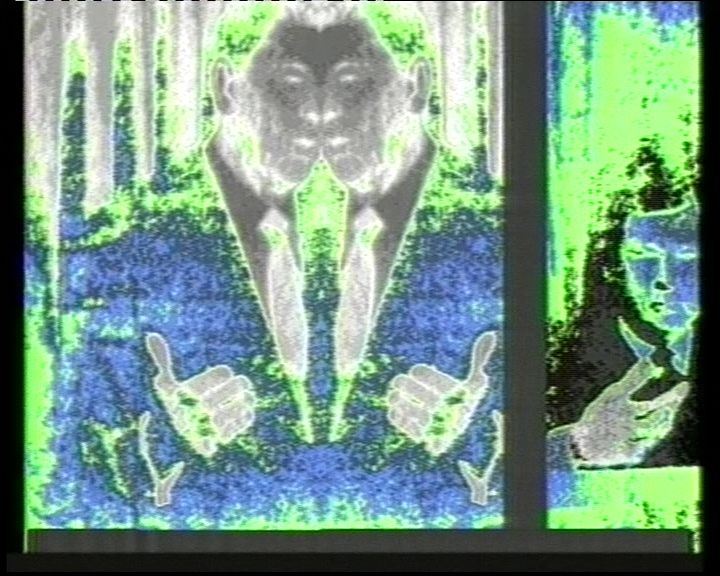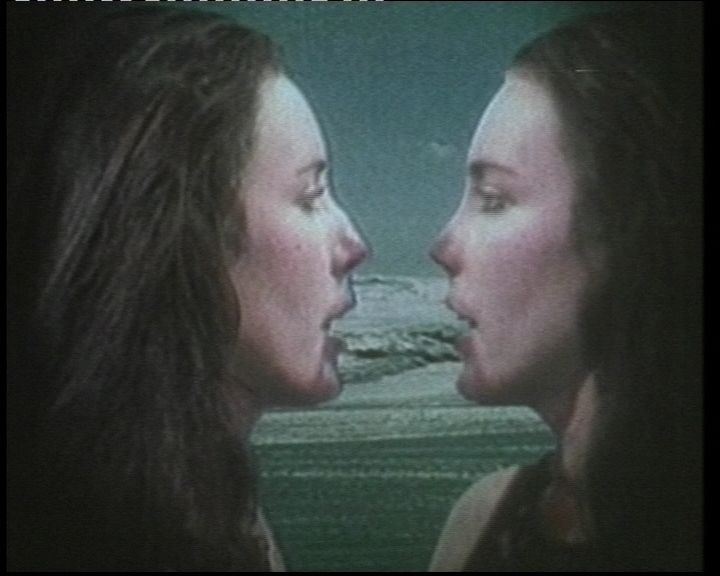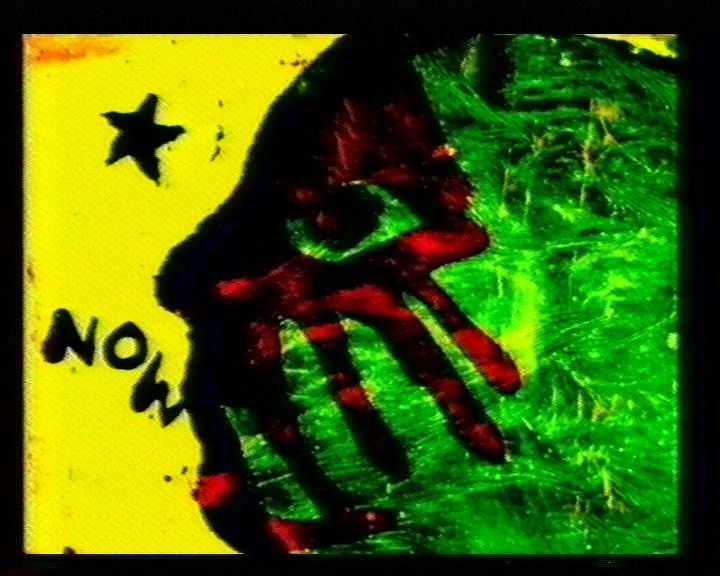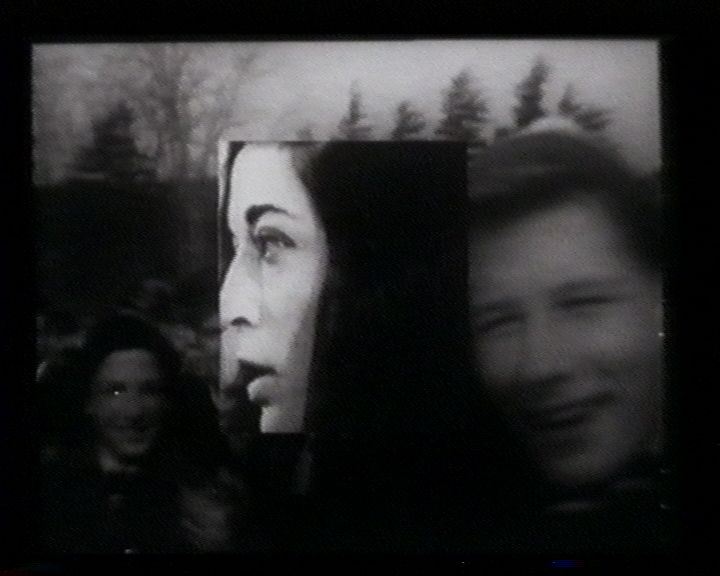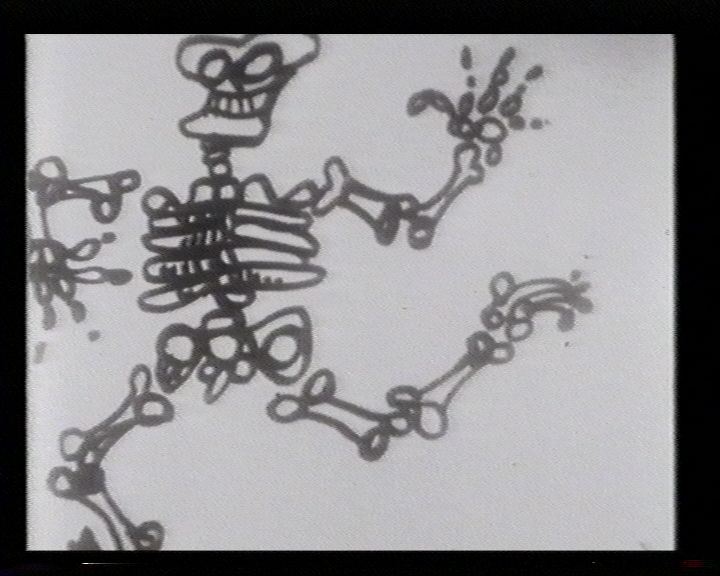Stan VanDerBeek
A pivotal artist in American experimental cinema during the later post-war period, Stan VanDerBeek worked for decades, bridging different periods and modes of research that nevertheless shared analogous and extraordinary intellectual curiosity and a unique sense of humor.
After his studies at Cooper Union and then at Black Mountain College he created his first animations in the form of collages, done in the irreverent spirit of the Surrealists and Dadaists, but with a more direct and informal taste and approach in line with the Beat Generation.
An ironic taste combined with an incredible ability in selecting visual materials distinguished his vision of animated cinema. VanDerBeek constantly experimented with formats and techniques. He explored the electronic medium, creating computer film animations and holographic experiments with the supports of Bell Laboratories. Fascinated by the dialogue with other disciplines, such as contemporary theater and dance, VanDerBeek’s attention moved towards a ground of powerful creativity and productivity that in his later years led him to the utopian experiments aimed at extending the visual and perceptive possibilities in the field of Expanded Cinema. He built a unique, round theatrical hall in which dozens of projectors gave the illusion of total immersion.
A visionary artist, Stan VanDerBeek was a precursor of his times. Even during the final years of his life, in the seventies he created works using global fax transmission, projections in unconventional places, and interactive TV programs. [F.B.]
List of Works
Visibles, 1959–1972
transferred from 16 mm film, black and white, color, sound, 105 min.
Purchased with the contribution of the Compagnia di San Paolo
Science Friction, 1959
transferred from 16 mm film, color, sound, 10 min.
To the frenetic rhythm of an eclectic acoustic collage, this short film presents an irresistible crescendo of situations and protagonists of the late fifties.
À la mode (In Vogue), 1959
transferred from 16 mm film, black and white, sound, 7 min.
Starting with a selection of photographs taken from fashion magazines the artist stages an amusing homage to glamour: faces, clothing, silhouettes, and poses create a compelling and ironic work.
Breathdeath, 1963
transferred from 16 mm film, black and white, sound, 15 min.
The artist alternates images of destruction and death with a series of youngsters dancing to pop music.
Poemfield No. 2, 1966
transferred from 16 mm film, color, sound, 6 min.
Beginning with electronic elaborations of colored computer graphics on monitors, the work concentrates on the creation and decomposition of pixelled words that become more and more abstract.
Achooo Mr. Kerrooschev, 1960
transferred from 16 mm film, black and white, sound, 2 min.
A short but insistent animation based on repertory and press images shows a selection of funny, even grotesque poses of Nikita Khrushchev.
See Saw Seams, 1965
transferred from 16 mm film, black and white, sound, 9 min.
With almost optical illusions the continuous overlapping, enlargement, and dissolving create collage effects in motion.
Panels for the Walls of the World, 1967
transferred from 16 mm film, black and white, sound, 8 min.
A refined work of montage, starting with many reportage and newsreel photos.
Oh, 1968
transferred from 16 mm film, color, sound, 10 min.
Characterized by the use of bright colors, this animation piece shows faces, profiles, hands, and figures that seem to come out of spots of color, thereby playing with the perceptive processes.
Symmetricks, 1972
transferred from 16 mm film, black and white, sound, 6 min.
The work features animations in rapid superimposition—or in split screen—of circular, luminous plays and movements that create psychedelic and visionary effects and atmospheres.
Selected Works I, 1976–1977
video, color, sound, 48 min. 30 sec.
Purchased with the contribution of the Compagnia di San Paolo
Newsreel of Dreams: Part I, 1976
video, color, sound, 28 min.
Based on a series of choreographies carried out for the Elaine Summers Dance Company, in an almost abstract flow of movements and electronic sounds, this work includes dance sequences, poetry, and electronic elaborations of images in motion, thus structuring a sort of collective oneiric condition.
Strobe Ode, 1977
video, color, sound, 11 min.
This visionary piece, in which the music is also by the artist, presents exercises of video feedback applied to images that are modified and rendered abstract by means of luminous stroboscopic flashes.
Vanishing Point Left, 1977
video, color, sound, 9 min. 30 sec.
The vanishing point, referred to in the title, is an analogy by which to indicate looking at a video screen that progressively takes on the forms of a mandala and a flower.
Selected Works II, 1977–1981
video, color, sound, 29 min. 03 sec.
Purchased with the contribution of the Compagnia di San Paolo
Color Fields Left, 1977
video, color, sound, 7 min. 47 sec.
Abstract images in motion that superimpose colored bands are the subject matter of this work. The resulting hypnotic effect is one of pulsing and increasing luminosity that is also enhanced by the use of electronic sounds.
Mirrored Reason, 1979
video, color, sound, 9 min. 22 sec.
A narrative evoked by the female face portrayed in the video tells the story of a woman who feels obsessed and then persecuted by her double.
Face Concert, 1981
video, color, sound, 11 min. 54 sec.
The face of a woman produces vocal sounds and expressions of every kind, while the flow of images presents multiplied and overlapping faces that are often in negative.”
Selected Works III, 1981–1983
video, color, sound, 29 min. 30 sec.
Purchased with the contribution of the Compagnia di San Paolo
After Laughter, 1981–1982
video, black and white, color, 7 min. 28 sec.
Satellite images of the Earth together with recordings of off-screen voices give way to a rapid editing of images of men in motion who seem to parody the idea of human evolution.
Reeling in TV Time, 1982–1983
video, color, sound, 3 min. 40 sec.
A series of electronic elaborations of a hand in front of a monitor with a visual feedback effect.
Self-Poured Traits, 1983
video, black and white, color, sound, 4 min. 52 sec.
To the reciting of poems by Kenneth Rexroth the artist creates an electronically elaborated portrait starting with a photograph and the numerous superimpositions obtained from it.
Sonia and Stan Paint a Portrait of Ronnie, 1982–1983
video, black and white, color, sound, 13 min. 30 sec.
VanDerBeek and the artist Sonia Sheridan carry out a series of electronic manipulations beginning with an image of Ronald Reagan and produced thanks to digital graphic effects created in real time.
